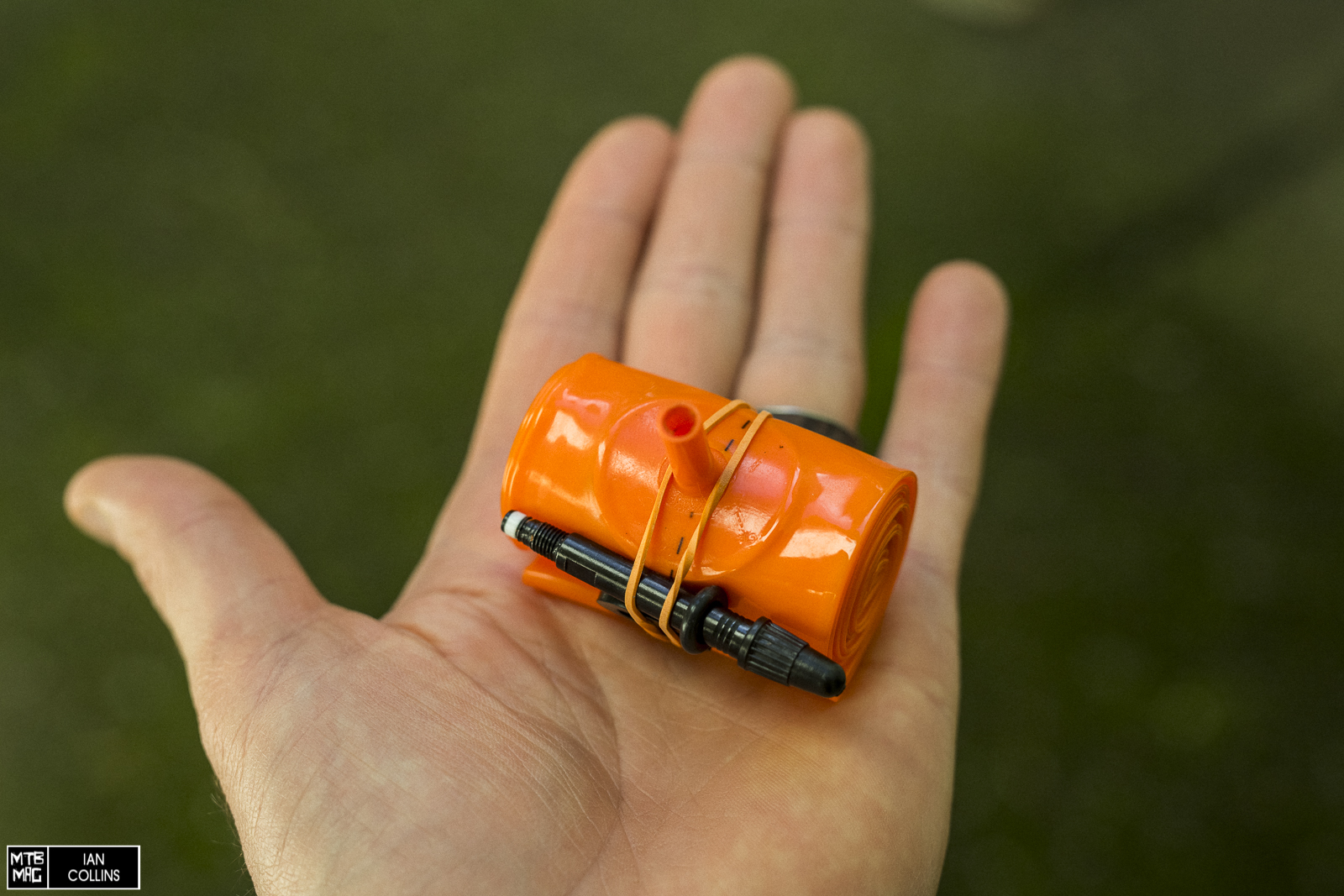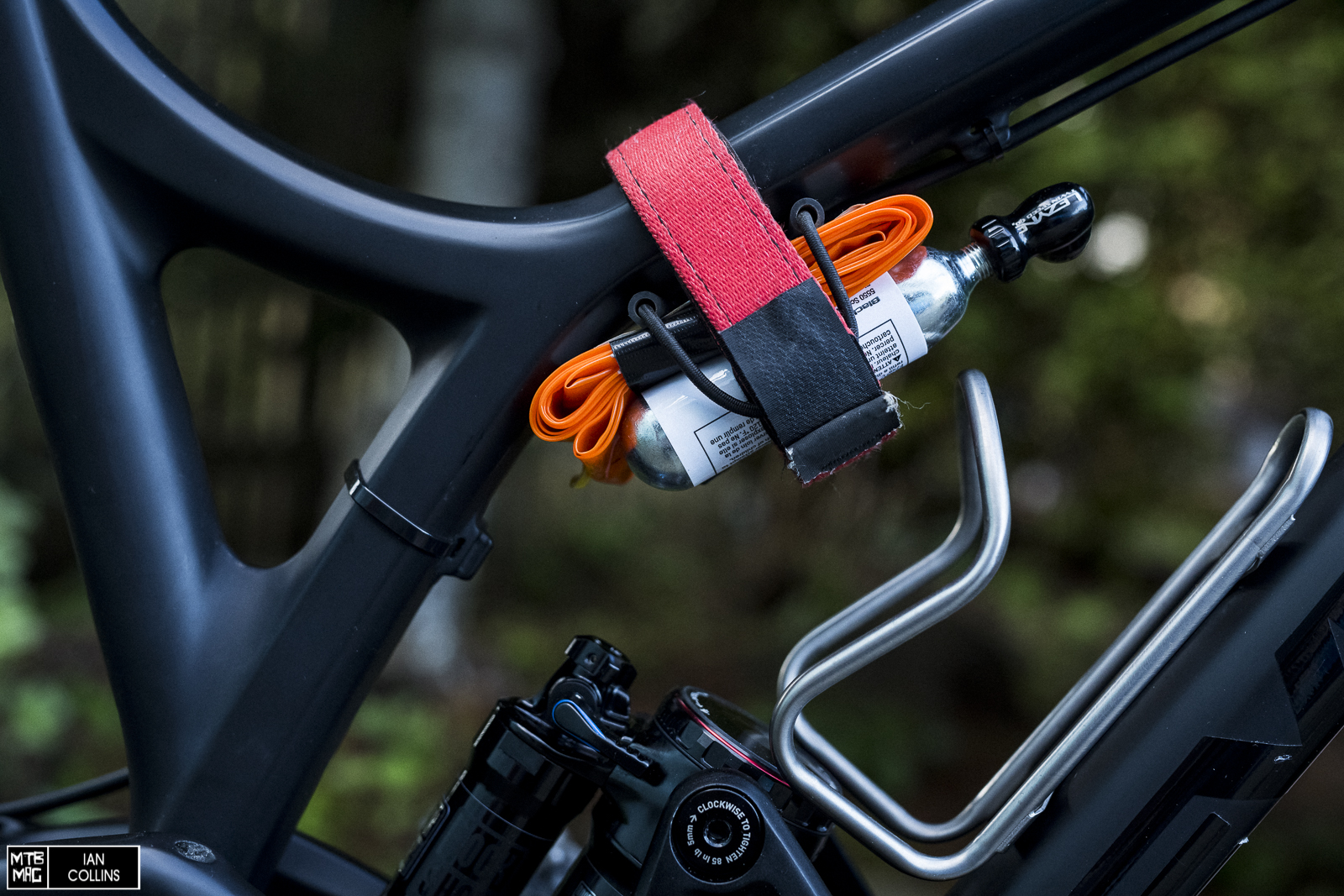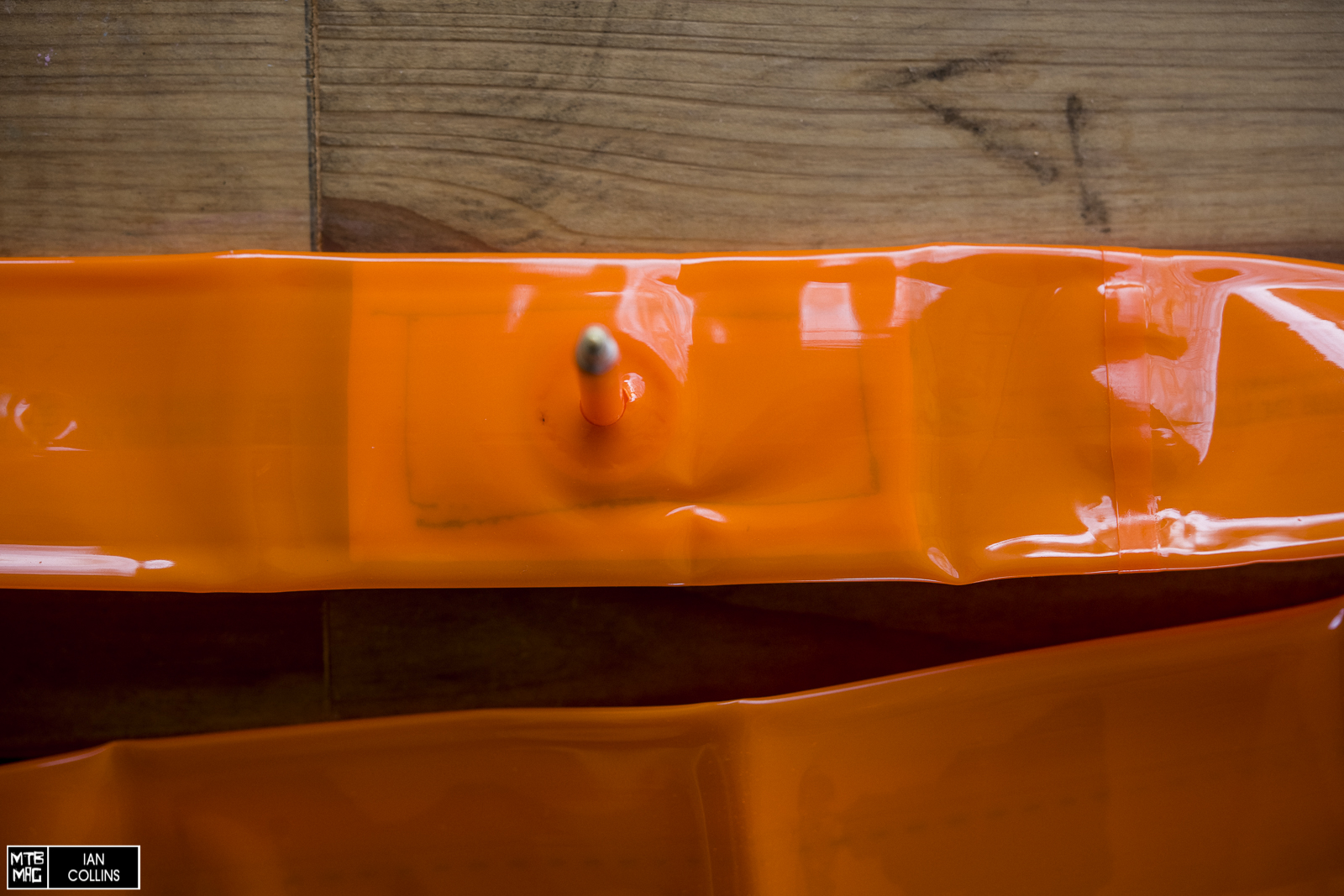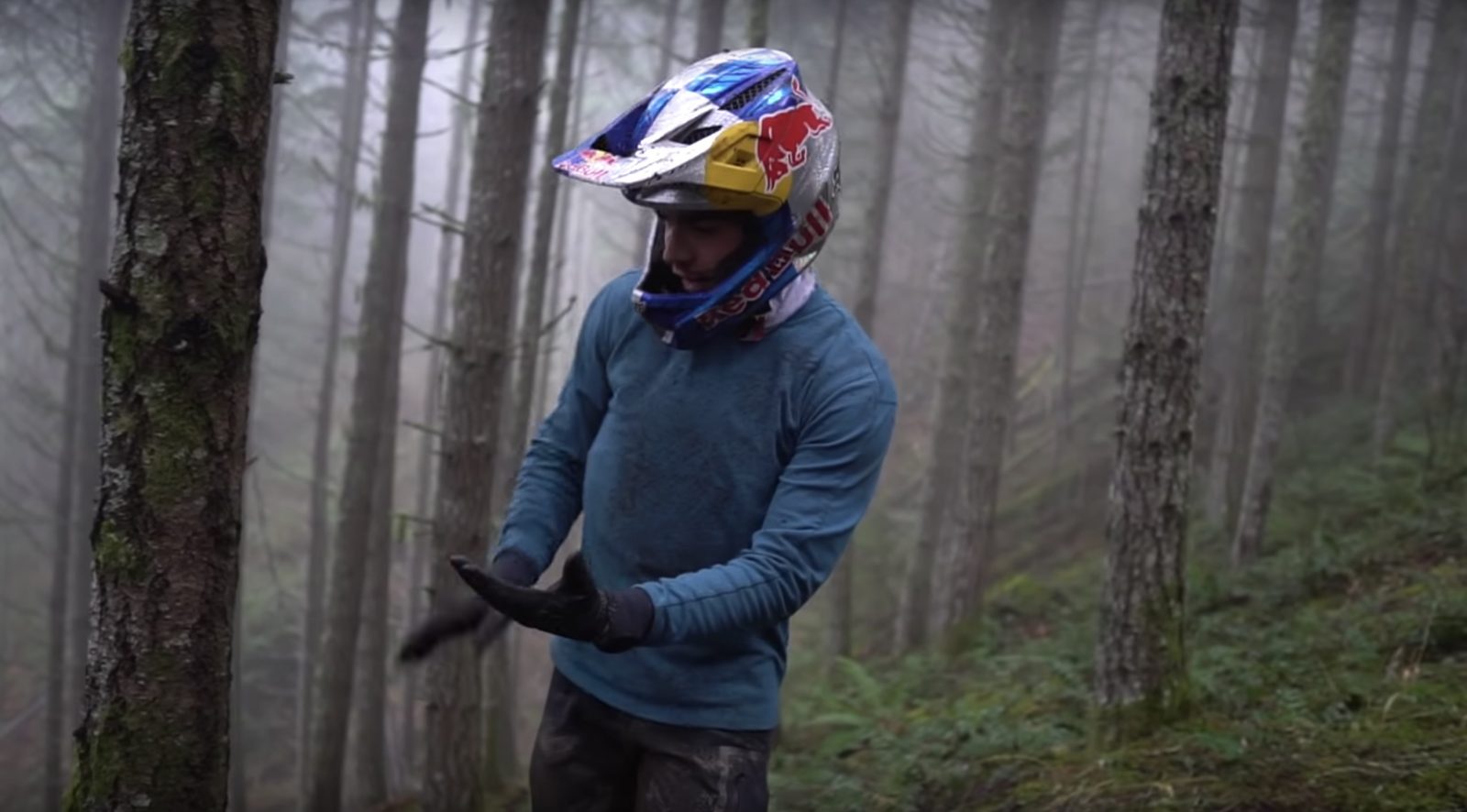Quite a while ago, Tubolito sent some spare tubes for testing, but unfortunately (for the sake of testing anyway) I’m not very good at flatting. More on that later…Founded in Austria, Tubolito was born from two engineers whose experience in plastics originated as they developed membrane materials for the speakers of smartphones. At some point they decided that butyl was dated and came up with their own thermoplastic elastomer compound to develop their own ultra lightweight tubes. The brand’s standard tubes come in around the 85 gram mark for 29″, which is about half the weight of a standard tube. In test here we have the S-tubo – which is even lighter at 45 grams, and is meant to be carried as a spare.
Details
- 3.5cm x 5cm (1.8″ – 2.4″)
- 26″, 27.5″ & 29″ available
- 45 grams for 29″ (verified)
- Removable stem
- 42mm stem length
- Same puncture resistance as a butyl tube
- $37.90
For the sake of comparison, here’s how the S-Tubo 29″ compares to a butyl 29″ tube as well as to tubeless. Two things to consider regarding the tubeless weight: first, the scale was zeroed out with the bottle emptied, so 68 grams is just the weight of the actual sealant. Second, the weight of the valve is not taken into account. The point being, an S-Tubo is about 35 grams lighter than tubeless once you do the math
The compact nature of the S-Tubo makes it easy to stash anywhere. Rolled up, it’s quite small, which is ideal for storing in a pack or pocket, but if you want to keep it on your frame, you may as well install the valve ahead of time and tape it to lay flat with some Gorilla tape (you never know when it might come in handy). Pictured above there is a tube, tire lever, tire boot, full size CO2, inflator and a plug kit (not visible) taking up a very small amount of real estate.
On the trail
If you haven’t realized it yet – aside from its compact size, the obvious advantage of the S-Tubo is how freakishly light it is. Most riders these days are hauling a spare tube around with them all of the time. The weight of a spare tube might seem irrelevant to a bike’s weight, but it’s still something that you’re dragging up and down a mountain over and over again. So while $37 is a lot to spend on a spare tube, but it starts to seem a lot less silly when you realize people spend $200+ on a titanium spring to save the same amount of weight. So, it checks out in a dollars:grams ratio pretty well, but how does it hold up on trail?
As I mentioned in the beginning of the article, I rarely flat – only twice in the last 5-6 years to be more precise – so in order to put the S-Tubo to the test, after months of carrying them on my bikes to no avail, I eventually caved and put them into a bike that I was installing fresh tires on. Typically I run my 29″ tires around the 25PSI front / 27PSI rear range. I’m not a fan of ultra low pressures as I hate when my tires roll and fold in corners. Regardless, for the sake of science now that we’ve had some wet, squirrelly conditions here in Santa Cruz, I’ve been running pressures in the 20PSI front / 22PSI rear range with S-Tubos installed on my Yeti SB-165. Keep in mind, these are the “spare” tubes – which aren’t really meant to be ridden long term. At this point, despite hunting for the steepest, rockiest trails in the area, I still haven’t flatted.
Overall
While $37 is a ton of money when you can buy a perfectly good tube for about 1/8th of that cost, if you do a price to weight analysis, plenty of mountain bikers spend way more money and get way less return on more frivolous parts (titanium springs and hardware, carbon stems…). Between their compact nature, ultra light weight and tough disposition, I think the S-Tubo is the perfect way to shed a substantial bit of weight. To be clear, I’m not advocating for replacing your tubeless setup with tubes, especially ones that are intended to be spares. There is still many obvious advantages to tubeless – one of which is that small punctures often seal themselves, which is not the case with tubes. Regardless, as the spare tube these are intended to be, the S-Tubo is great.












